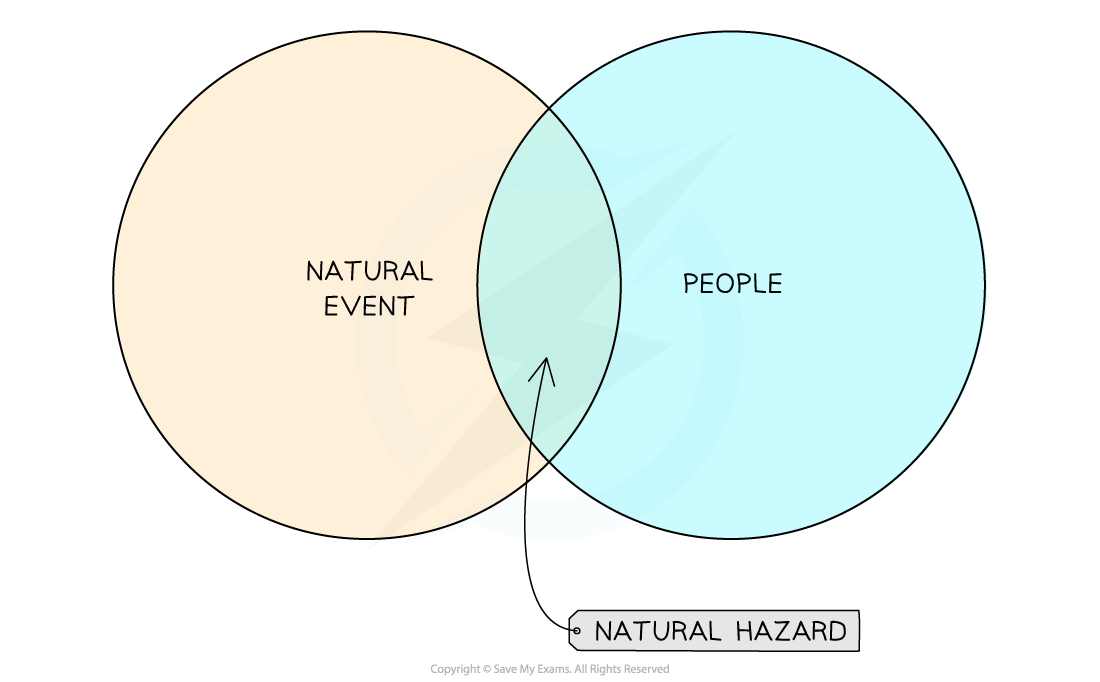Natural Hazards
Natural hazards
- A hazard is an event which has the potential to cause harm to the environment, people or the economy
- A natural hazard is an event caused by environmental processes and would occur without the presence of humans
- The term hazard is used because of the potential impact when the natural event interacts with humans

- A disaster occurs when harm actually occurs to the environment, people or the economy
Exam Tip
It is important to remember that a natural hazard is a natural events that has the potential to harm people and their property. A disaster only occurs when that potential is realised so actual harm occurs.


